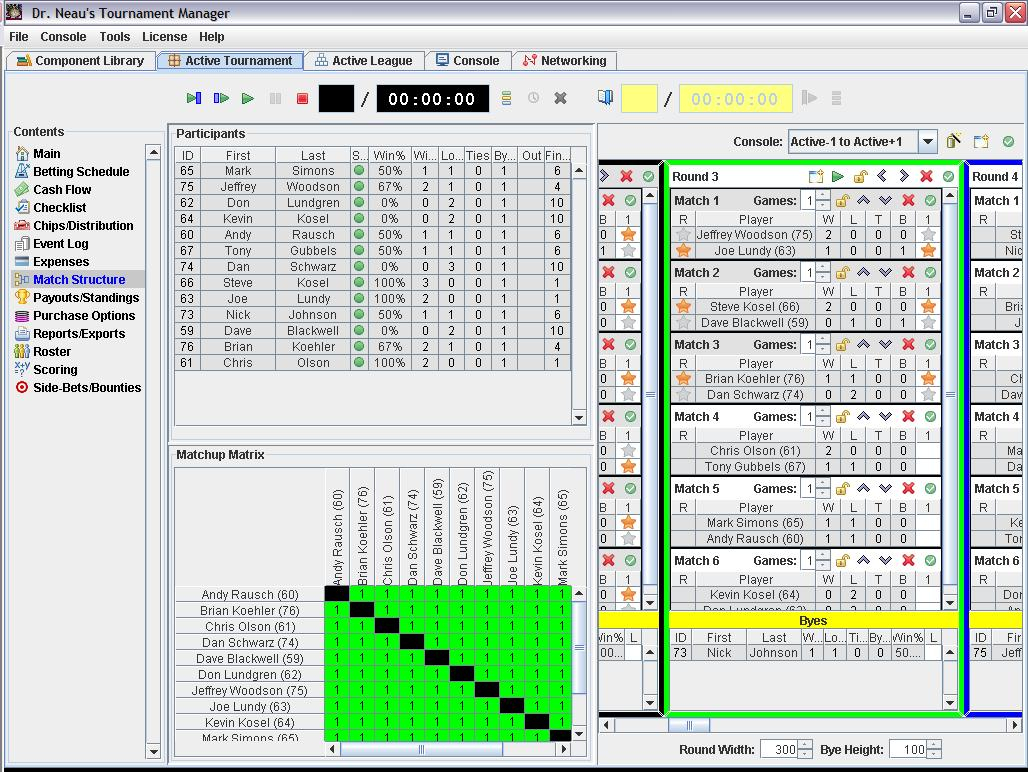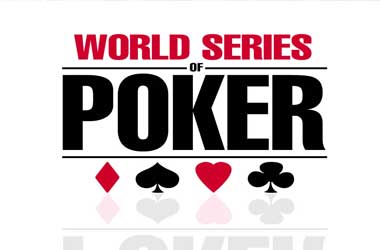Poker Tournament Point System Formula
- The poker industry's most comprehensive ranking system for poker players. Bluff's ranking formula was created by a panel of professional poker players, and is widely accepted as the standard for historical tracking of a player's performance.
- Choose the number of tournament payout places or let it calculate it for you. Select a 'base point number' i.e. The number of points the first person out of the tournament gets. Choose the focus of 'bonus points' awarding them for being in the money, going heads up or winning.
Poker Tournament Strategy: The Differences between Harrington on Hold'em and Snyder's Poker Tournament Formula
By Radar O'Reilly(From Blackjack Forum Vol. XXVI #1, Spring 2007)
© Blackjack Forum Online 2007
It is the central trope of the anime Yu-Gi-Oh!, where skilled players have an uncanny ability to always draw the 'only' card that will help them, even if it is the ONLY copy of that card in their entire 40-60 card deck.In the manga on which the series is based, this is explicitly a superpower of the main character, but in the anime, it appears to be a function of skill and faith, particularly. The best tournament poker strategy is to recognize the three stages of any poker tournament and to have a distinct tournament poker strategy for each of the vital crunch times during a poker tournament. There are two approaches you can use when playing the early stages of a poker tournament. The first is the conservative approach.
A Difference in the Primary Focus of the Strategies
A number of players and commentators seem confused about the differences between the poker tournament strategy presented in Harrington on Hold 'em, and the poker tournament strategy presented by Arnold Snyder in The Poker Tournament Formula
Specifically, commentators like Mason Malmuth of 2+2 Publishing and Steve Zolotow of Card Player have been confused by one particular superficial similarity between the strategies—the fact that both strategies advocate looser starting hand requirements as your chip stack grows smaller. Because of this superficial similarity, Malmuth and Zolotow have called Snyder's strategy a weak imitation of Harrington's. Nothing could be further from the truth.
Actually, the specific starting hand requirements advocated by Harrington and Snyder are vastly different, and so is the criterion by which they judge the adequacy of stack size and determine how much to loosen up. But these are not the most important differences between the two strategies. Arnold Snyder is writing a separate article that will address the differences in starting hand requirements and the significance of these differences. In this article, I will address the deeper, fundamental differences between the Snyder and Harrington strategies.
Poker Tournament Point System Formula Calculator
Harrington's strategy is a conservative, or tight, strategy. The decision to play is almost always initiated by the cards you receive: You wait for the best hand you are likely to receive, mathematically, within a given amount of time. Harrington advocates bluffing, including blind steals, only once every hour and a half. With such infrequent bluffing in the Harrington strategy, poker skill comes into play chiefly in how you play your cards.
Snyder emphasizes the importance of tournament factors other than cards in making decisions both on whether to enter pots and how to play hands. In fact, Snyder specifically states in The Poker Tournament Formula that cards are the least important weapon at your disposal in poker tournaments, no matter how well you play those cards.
In The Poker Tournament Formula, Snyder emphasizes the importance of chips and position over cards in a winning poker tournament strategy. Chips and position are the keys to player manipulation, and the whole Poker Tournament Formula strategy is built around player psychology and player manipulation for the purpose of much more frequent bluffs.
To oversimplify a key difference, the Harrington strategy is focused on cards, while the Snyder strategy is focused on theft.

Current M versus Tournament Structure

And there are other important disagreements between the Harrington and Snyder strategies that sharpen the light on this difference in focus. For example, Harrington emphasizes current M (the size of your stack relative to the costs of a round) in making tournament hand selection decisions. He doesn't consider overall structure (future M, or acceleration of M) except when you're within a few minutes of entering the next blind level.
Snyder emphasizes the importance of overall tournament structure, rather than current stack relative to the costs of a round, in determining whether to enter a pot and how to play any hand. Basically, Snyder's idea is that by the time you're forced to play according to M, you're in bad shape in a tournament.
Poker Tournament Point System Formula Sheet
In focusing on M, Harrington is focused on survival, on giving himself the best possible chance of hitting 'good cards.' He is focused on calculating the cost of a round because he wants to know how long he can go without playing a hand before he gets short or blinded-off. When you are not short in chips, Harrington advocates patience.
Snyder, who thinks cards are the least important weapon in a tournament, is focused on chips and the psychological and strategic power of a big stack. He advocates emphasizing earning with skills related to chips and position long before tournament structure starts to limit opportunities to earn with skill. For more information on the importance of a chip lead in Snyder's strategy, see Snyder's article Reverse Chip Value Theory: Good Math, Bad Logic (A Reply to David Sklansky), particularly the article's discussion of 'Chip Utility Value.'
One of the chief disadvantages of the Harrington style is that you get short more often, which means a Harrington player will be forced into low-skill all-in confrontations too often in tournaments. Some players seem to believe that the style advocated by Snyder will get you busted out early more often, and that's true to an extent, but these players greatly overstate both the frequency of this occurrence and the frequency with which Harrington's waiting style will pay off.
Harrington understands, and specifically states (in Harrington on Hold 'em II) the value of maintaining enough chips to play a poker hand after the flop. Again, he is focused on cards, and on playing his cards with skill. While Harrington does briefly address the importance of average stack size, he does very little with it in determining overall tournament strategy.
All decisions about what cards to play are based on your current stack relative to the costs of a round (or the costs of a round in the next 15 minutes), and decisions about how to play those hands are based primarily on your current M and the M of opponents, with only a glance at current average stack size, and no consideration of tournament structure.
Snyder understands the value of chips in playing a hand with skill (again, see Snyder's chip utility discussion), but his book focuses on the more overarching value of a chip lead in terms of overall tournament strategy. To Snyder, a chip lead both maximizes your gains from manipulating your opponents, and sets a player up for the luck portion of a tournament.
Unlike Harrington, Snyder looks at the overall structure of a tournament to determine when the luck portion of a tournament will start and how many chips a player needs to have earned by that point. Snyder correctly points out that the tournament effectively ends at that point, which may be hours before the final table, and that being short at this point is the mathematical equivalent of losing.
The Most Important Difference: Why Snyder's Poker Tournament Strategy Inevitably Beats Harrington's Over the Long Run
In closing, it is a fact of professional gambling that those who can get their money in action with an edge more frequently will earn more than those whose strategies identify profitable betting opportunities less frequently.

And the biggest difference between Snyder's Poker Tournament Formula strategy and Harrington's strategy is that Snyder's strategy will identify profitable betting opportunities more frequently than Harrington's strategy will. Therefore, Snyder's strategy is superior to Harrington's. Let me say that again, to make it absolutely plain: You will make more money in tournaments with Snyder's strategy than you will with Harrington's strategy.
It should be noted that the basic strategy presented in The Poker Tournament Formula is geared for tournaments of a particular speed (meaning a specific blind structure relative to starting chips). Specifically, Snyder's basic strategy and specific hand-play recommendations were designed for tournaments of a speed he calls Skill Level 3.
Snyder is the first author to present an easy method of identifying which fast tournaments offer significant advantages for skillful players, and which don't. Authors like Steve Zolotow claim that fast tournaments are unbeatable, and I have no doubt whatsoever that Zolotow has not been able to beat them, but it's not because fast tournaments are truly unbeatable. Players like Zolotow lose at fast tournaments partly because they are failing to identify which fast tournaments can be beaten, and partly because they are using the wrong strategies for the tournaments, out of the mistaken belief that tournament structure doesn't matter.
In any case, since tournament structure is crucial to optimal poker tournament strategy, Snyder's specific 'basic strategy' (hand-playing tactics and other details) for Skill Level 3 tournaments will have to be adjusted by players for tournaments of different speeds. But the underlying principles of the strategy in The Poker Tournament Formula, with starting hand selections and hand-playing tactics adjusted for tournament structure, will beat Harrington's strategies in any tournament, fast or slow. ♠
[Note: Again, there are numerous other specific differences between the Harrington and Snyder strategies that are important enough that Arnold Snyder will be discussing them in a separate article.
Return to the Blackjack Forum Professional Gambling Library
Return to Blackjack Forum Online Home.